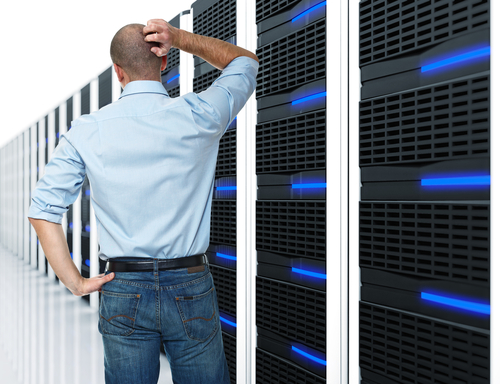
Our world has long outgrown the puny processing power of the localized data service that businesses used to get from: the once-prevalent – but now largely outdated – data centers. The definition of data center has moved on from being that cold, buzzing, semi-lit room which only the techies dared walked in to… and moved on to becoming a concept that most of us don’t even ever get to see – The Cloud. This – if you are quite honest – is a concept that brings to mind an image of “bits” of data floating around in the sky and moving about with the help white puffy entities.
Trying to explain what it looks like to be inside some of the biggest data centers in the world – especially to a lay person who has never even seen the inside of the small, local ones – can be a bit difficult.
But let’s try:
They are Expansive
We need to start with this point – size – because we need to fully understand that major data centers are immensely huge. They are so huge in fact that the people that work there can’t even get around them by walking. They need to use bicycles, scooters or even – in the case of Facebook’s data centers – golf carts, if they are going to get any work done.
It is Colorful
Contrary to that common held image of a cold, darkened room with drab colors of black-and-white tones, most server rooms are brightly lit fiestas of colors.
Apart from the aesthetic value of having to see a rainbow-colored room, server companies need to know what cable does what job, where it is coming from and where it is heading. The easiest way to do this is by color-coding the cables so engineers and administrators can understand, at first glance, what sort of cable they are dealing with.
In some instances, the companies even color-code their servers and racks. All this adds up to a huge room that sometimes looks like something out of Willy Wonka’s wildest imagination.
It is Cold
Servers are very power-hungry devices not only because they need to be running at optimal speeds and catering to non-stop input and output of data requests, but also because the continuous processing heats them up and that requires industrial-strength cooling solutions to be installed alongside them.
But, some of the big players have come up with a rather simplistic way of handling this issue: build the data centers where the temperatures are actually cold… like in the Arctic Circle. That is what Facebook did when it built its data center in Lulea, Sweden: it simply used cold Nordic air as a cooler by having it pushed through the facilities using geothermal energy (which is eco-friendly and abundant in the country).
Trivia: It also holds the record for being the most northerly located data center of its size.
There are Rules to Abide By
Although you might think that since the companies that own the data centers are independent bodies that have only themselves to answer to when it comes to storing their data, there are actually some rules and streamlining policies they might need to adhere to if they are to work efficiently with other companies.
One such streamlining effort is the one that is proposed by the Open Compute Project (OCP). This consolidation of technology leaders shares designs and hardware implementation of data center products to some of the biggest tech companies out there including Google, Facebook, Microsoft, Apple, Cisco, Intel, Lenovo and many more.
This means, although there may be some variations in the way devices are placed they will eventually have a basic design that all of them will need to adhere to for the sake of efficiency, inter-operability and ease of scalability.
In other words, data centers have more in common than one would actually think.
They are Noisy
If there is one aspect administrators and server techs do not like about their otherwise “great” job (most people that work behind the scenes and only handle servers enjoy their jobs because they are left alone and don’t have to deal with customers/clients or bosses – for the most part) is, ironically, the noise.
Server rooms can produce an immense amount of noise and especially when you put hundreds – or even thousands – of them together under one roof, as is the case in the large data centers: you multiply the volume by that much.
The permissible amount of noise employees can work in under the OSHA (Occupational Safety and Health Administration) and NIOSH (National Institute for Occupational Safety and Health) is about 85 dBA. Anything greater than that, or even being exposed to that amount of sound beyond the recommended amount of time (OSHA = 8 hrs, NIOSH <16hrs) could cause irreparable damage to hearing.
That is why employees are asked to wear noise canceling headsets when they are in the data centers.
Although there are much more sensations that you will feel as you walk into a data center… these are the ones that you will primarily take notice of as you do it for the first time.



















